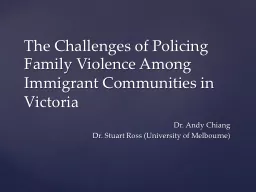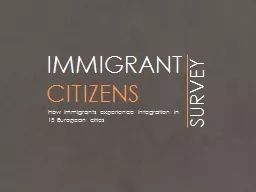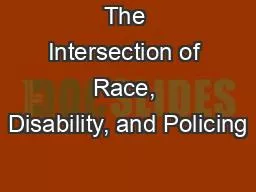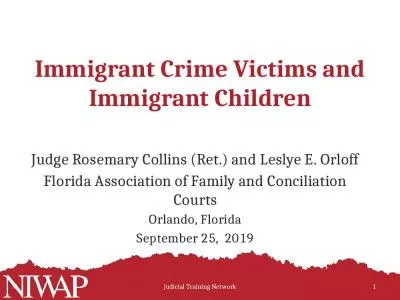PPT-The Challenges of Policing Family Violence Among Immigrant
Author : pamella-moone | Published Date : 2017-08-24
Communities in Victoria Dr Andy Chiang Dr Stuart Ross University of Melbourne Overview Background and Context the initial wave of family violence reform Initial
Presentation Embed Code
Download Presentation
Download Presentation The PPT/PDF document "The Challenges of Policing Family Violen..." is the property of its rightful owner. Permission is granted to download and print the materials on this website for personal, non-commercial use only, and to display it on your personal computer provided you do not modify the materials and that you retain all copyright notices contained in the materials. By downloading content from our website, you accept the terms of this agreement.
The Challenges of Policing Family Violence Among Immigrant: Transcript
Download Rules Of Document
"The Challenges of Policing Family Violence Among Immigrant"The content belongs to its owner. You may download and print it for personal use, without modification, and keep all copyright notices. By downloading, you agree to these terms.
Related Documents














